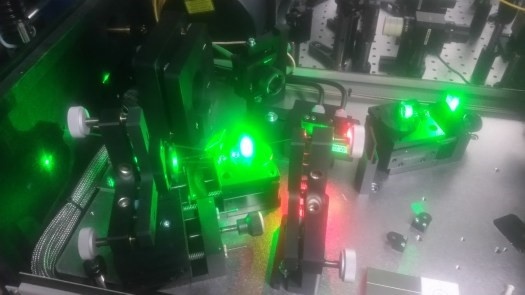CSULB Establishing First Optics and Laser Laboratory

The lab will feature three laser systems, including a tunable titanium-sapphire continuous wave laser, an ultrafast pulsed laser, and a telecom optical wavelength band laser. Together, they will deliver the ability to test in any wavelength, from 350 to 1,565 nanometers.
“This covers the entire visible spectrum and partially covers the ultraviolet, near infrared region of the electromagnetic spectrum,” said Ahmed. “This optics lab will be able to support any type of experiment within this broad wavelength range. The ultrafast laser system will allow us to study transient phenomena.”
The lab will allow for theoretical modeling and the design, development, and demonstration of optical systems and devices in a wide range of areas. Optics involves studying the properties of light interacting with matter. The lab will afford research opportunities in a wide range of areas, including optics, photonic integrated circuits, optical communications, renewable energy conversion/storage, nonlinear optics, THz generation and detection, biochemical and chemical sensing, sub-diffraction imaging, and high-resolution spectroscopy.
Ahmed’s background is in electromagnetics, optical bio/chemical sensing using unique capabilities of plasmonics, where light can be focused to nanometer dimensions, enhancing the optical field to product an enhanced interaction between light and matter. His research group is interested in using the new lab to develop and test optical devices for high-speed communications and optical sensing.
“With every cell phone and every PC, the demand for data is increasing every day. Very soon we’ll be running out of speed,” said Ahmed, who is targeting very-high-speed modulators that are 100 times as fast as those currently available.
“Electrical engineers will eventually go towards optics,” said Ahmed. The lab “will be something very new for the students and something that will enable to them to learn about a new field. This is what’s driving the future.” “This will enable us to improve our teaching capabilities at CSULB,” said Ahmed. “It will impact a large number of students, and help us in research as well as training future engineers.”
Applications for optics are very broad, said Ahmed, adding that federal agencies are interested in developing new methods and techniques to improve our capabilities in a wide range of research areas as discussed above and the state-of-the-art optics lab will allow us to carry out high impact work in these areas.





